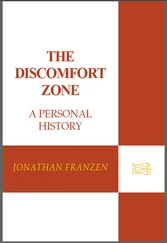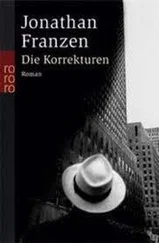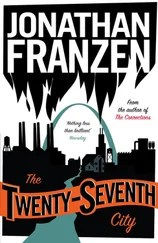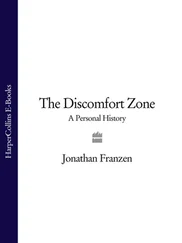Mr. Winn, standing at my shoulder, is sighing at precise five-minute intervals.
I ask Levasseur whether he considers himself the worst of the worst.
“People like Robert McNamara,” he says, “they’ve killed a hell of a lot more people than I have. That’s the problem. If you want to define crime as somebody with a crack pipe, or somebody’s B and E or something like that, it’s always going to boil down to very black and very poor people. OK? But you get these monstrous crimes committed by somebody like McNamara. And Union Carbide, what they did in India, they killed eight thousand fucking people.” He lowers his voice a little, reflectively. “Of course, I was convicted of bombing Union Carbide.” He snickers and then, rubbing his face, regains his composure. “Small price to pay for the lives of those people.” He points at Mr. Winn. “He probably idolizes somebody like Robert McNamara. He doesn’t see what they do as a crime.”
Mr. Winn takes this opportunity to say to me, coolly, “Do you have any final questions you’d like to ask?”
I shrug.
Levasseur shrugs.
I tell him I’ll write to him.
Once he is gone, a guard releases us from our side of the contact visit room. We have twenty-five minutes left to tour ADX. Time enough to walk down a great many climate-controlled corridors; to inspect the cast-concrete indestructibility of the fixtures of an empty cell (the cell is gray, about seven by twelve feet, and it has an integrated sink-toilet-fountain, a concrete bed and desk, a built-in electric cigarette lighter, and a narrow window offering a fragment of blue sky); to drop in at one of the law libraries and the leisure library (mass-market paperbacks only; lots of Louis L’Amour and Robert Heinlein); and to have one brief conversation verging on the pleasant. I ask Mr. Winn how ADX has managed to attract the attention of CBS, ABC, NBC, CNN, NPR, the BBC, French TV, Yorkshire TV, Der Spiegel , the New York Times , the London Times , and Details . He replies that the attraction is partly the high-tech stuff but mainly “the mystique of Alcatraz”—the romance that inevitably surrounds whatever prison holds the worst of the worst.
Still hoping to win him over, I venture the opinion that romanticizing prisons is a sick thing. He nods. “Just work in one for a day,” he says. “They’re not happy places.”
I’m moved by his sober tone, but only briefly. The violent political warfare which shook America in the sixties and seventies and which has lately resurfaced — in the Unabomber case, in Oklahoma City, in the Philadelphia of Mumia Abu-Jamal — is most active in the prisons that hold a million and a half people, almost all of them poor. That the vast majority of these people are unpolitical takes nothing away from the state of war. Rare is the war that is fought on principle; jailers and jailed are simply blood enemies. And the roots here are deep. Mr. Winn grew up on Army bases, whereas Shakur grew up in Jamaica, Queens, and Levasseur in a depressed mill town in Maine. Their war is hidden from public view by teal and salmon and phrases like “worst of the worst.” Those who are losing it are, in the main, sociopaths. Those who are winning it wear nice suits and talk of sadness.
I’d like to believe I’m not implicated in this war.
TO FREMONT COUNTY, Colorado, prisons mean one thing and one thing only: dollars. The county seat, Cañon City, may have been the first community in America to recognize incarceration as a growth industry. In 1868, having supported Denver in its successful bid to become the permanent state capital, Cañon was offered its choice of payoff: the state prison or the state university. It took the prison.
More than a century later, the town and its environs have a lock on state corrections. Nine of Colorado’s eighteen prisons are located within five miles of Cañon City’s Wal-Mart. The Colorado Territorial Prison Museum, housed in a decommissioned cellblock at the west end of town, is a rallying point for Cañon’s high society. In the yard outside the museum are picnic tables, a rusting octagonal gas chamber, and a pair of cells in which sunburned British tourists ham it up as desperate convicts. Prominent Cañonites contribute to the Museum Foundation at the Warden level (five to ten thousand dollars); lesser lights may choose, say, the Sergeant level (one hundred to five hundred dollars). To raise further money, there’s an annual golf tournament and an occasional Big House Bash — a fancy-dress affair at which, a few years ago, arriving benefactors dropped their invitations into a plastic scale model of the gas chamber.
A few miles east of Cañon, on the banks of the Arkansas River, is the one-stoplight town of Florence. Elks, Eagles, and Legionnaires call bingo here three nights a week. At the corner of the road to the FCC is a new Hardee’s that everyone in town is proud of. Ranged along Main Street are one bank, one drugstore, one grocery store with a permanent-looking billboard welcoming the FCC, and a wealth of vacancies and For Sale signs. Here the mayor of Florence, Merle Strickland, a seventy-two-year-old Texan lady with diamond stud earrings and a white Ford pickup, liquidated her furniture store because she could make better money on Wall Street and (she quips) the stock is easier to carry.
Concrete-clad irrigation ditches line Florence’s side streets, greening the cottonwood-shaded lawns of stuccoed pillbox houses and a few brick Victorians. Cyanide Street, on the western outskirts, dead-ends in a dismal RV park called Last Mile Estates. The Arkansas, roiling and bucking just beyond, is the color of steamed artichokes.
Florence was once a town of thirty thousand and the center of a booming extractive economy. Coal, oil, gold, limestone, gypsum, fuller’s earth, and alabaster all were mined or processed here. Florence’s No. 42, the country’s oldest continuously producing commercial oil well, still draws four barrels a day. By the 1980s, however, most of Fremont County’s mineral wealth was exhausted. Ruined hillsides and unnatural-looking gulches scarred the local landscape, and Florence’s population had taken a free fall to three thousand.
“We were like a dry lakebed, an area of clay full of cracks,” says Skip Dyer, the former executive director of the Fremont County Economic Development Corporation. “The money was the water, and the water had just disappeared. It was a rather desperate time for many, many people and many, many businesses.”
To economically parched Fremont County, a federal correctional complex represented the terminus of a pipeline through which federal money, in the form of payrolls, could flow at upwards of fifty thousand dollars a day. There would also be one-time cash cloudbursts when facilities were built or renovated. Boosters of the prison envisioned thriving custom for their businesses, and a population rising to the critical mass that would draw new employers to the area.
Fremont County’s tapping of the new federal resource began in 1986, when a local pencil salesman named Tom Schryver saw his chance to make a good old American killing. It happened that Schryver’s brother worked for the BOP, and he mentioned to Schryver that the Fed was seeking troubled colleges, monasteries, and convents that might be convertible to minimum-security prisons. It happened, further, that Cañon City possessed just such a property: the Holy Cross Abbey. Holy Cross sat on 220 acres just outside the Cañon city limits, near the Wal-Mart, and was outfitted with dormitories and a dining hall that could feed three hundred. Its finances were rumored to be precarious.
There was abundant evidence, moreover, that Fremont County did not mind hosting inmates. On a Sunday morning after my visit to ADX, I pick up a Florence town councilman named Jimmie Lloyd who has promised to introduce me to Schryver. Lloyd, a retired air force lieutenant colonel, summarizes the Cañonite attitude toward prisons this way: “Escapees don’t stick around, and who’s going to burglarize a house that’s potentially a prison guard’s? You get caught and go to jail, you may wind up with the victim as your guard. You also run the risk of getting your head blown off. There’s probably more guns in this area than in half the state.”
Читать дальше
Конец ознакомительного отрывка
Купить книгу












